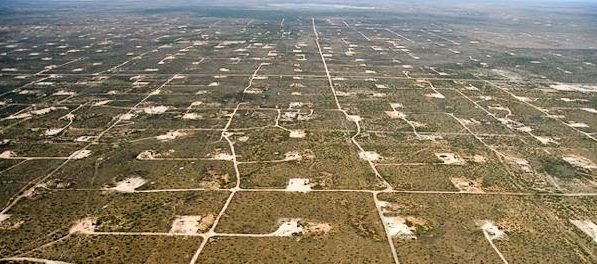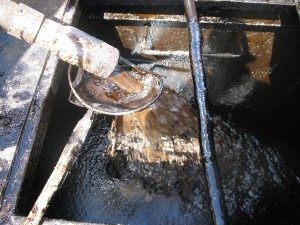 Experts expect to see more E&P, service company bankruptcies before next boom starts
Experts expect to see more E&P, service company bankruptcies before next boom starts
Despite oil prices hovering in the mid-$40 range, the Permian Basin industry is shaking off two years of hibernation and readying itself for another upturn.

The pace of activity has picked up noticeably of late.
Apache announced on Wednesday a huge new find in the South Delaware Basin called the High Alpine that contains three billion barrels of oil and 75 Tcf of natural gas (by comparison, the huge Marcellus field contains 84 Tcf). EOG Resources Inc said on Tuesday it is buying privately-held Yates Petroleum Corp – and adding adjacent plays of 574,000 acres – for $2.5 billion. And back in July, Pioneer Natural Resources CEO Scott Sheffield said in a that he expects Permian oil production to rise from 2 million b/d to 5 million b/d even if oil prices remain under $60.
The reason for the rush to the Permian, says energy economist Ed Hirs, is that other shale basins – like the Bakken in North Dakota and Montana, and the Eagle Ford in South Texas – aren’t economic at sub-$50 prices.
“Industry is under attack and it’s retreated to the Permian,” he said in an interview. “Many of the companies have assets elsewhere and as they re-organize, we’re seeing a lot ownership change as companies abandon uneconomic plays and pile into the Permian.”

Veteran petroleum engineer Alan Means says recent oil price increases have buoyed spirits, but the enthusiasm will be tempered with caution until prices are “north of $50, anything in there for a few weeks.”
“”Everybody in West Texas is pretty bullish right now,” he said in an interview. “But I’m still not seeing enough activity increase to cause anybody to do much of anything yet.”
When activity does increase, probably in the new year, the ramp up may be different than after previous busts, says Stephen Robertson of the Permian Basin Producers Assoc.
Finding enough workers – and the right ones – may be a challenge.
“There is a big transition to automation in the field and it’s been going on for several years. Instead of brute force, now you need intellectual focus and technical training to track automation and repair, or interact with computer systems,” Robertson said in an interview.
Mike Swihart is the CEO of Production Lift Systems Inc. of Midland. He says the entire industry is going to have to be more efficient in everything it does, especially through automation.
“We can cover a lot more ground, keep a lot more wells online. Tremendous cost savings. The entire industry is headed that way,” he said.
Means agrees: “We’ve seen a lot of younger people come into industry in recent years and they’re a lot more educated than the old hands. Technically they’re sharper, but they have absolutely no experience.”

He says has the industry has lost whole generations of workers in past downturns, particularly during the -mid1980s, and while more youth entering oil and gas is a very good thing, once again a wealth of experience has been lost.
“I’m seeing resumes from really skilled engineers and geophysicists who have spent the past seven or eight years in the Permian and now have no work,” said Hirs, who is also the managing director of Hillhouse Resources. “So, we’re getting mixed signals.”
“A lot of the service companies have laid off so many people that they’ve only got one person you can talk to…some people will leave the oil patch and they won’t come back,” said Means, who is the CEO of Midland-based Cambrian Management.
“Its going to take a while to ramp up. You’re not going to go over there and flip a switch and put a hundred rigs back in the field.”
Another Permian issue festering in the background is the financial health of small to mid-size exploration and production (E&P) companies. According to law firm Haynes and Boone, 90 E&P firms had declared bankruptcy in the United States and Canada, 44 of them headquartered in Texas, representing almost $30 billion of secured and unsecured debt.
But many other companies are restructuring their debt in a desperate attempt to avoid Chapter 11. “Most lenders, most second lien guys, and most management teams want to avoid going into federal bankruptcy court where they lose control of the process,” said Hirs.

Instead, E&P companies are turning to private equity. But the financial lifeline comes with its own complications.
“There’s a lot of financial engineering that’s gone on behind the private equity-backed companies in the Permian and that financial engineering may not be as sound as the downhole engineering,” he said.
“In essence, they are bankruptcies in everything but the filing at the courthouse. There’s a huge amount of that going on behind the curtain right now.”
Means expects a lot more private equity capital will flood into the Permian once the oil stays above $50.
“Lots of private money was invested before 2014 [when oil prices collapsed], but they haven’t invested in two years. There’s always been some, but not heavy,” he said.
“There’s a ton of it sitting on the sideline just waiting for somebody to come to them and say, ‘Hey, we can make money at $50 a barrel,’ and off to the races they’ll go.”
The Permian will almost certainly see more service company bankruptcies before the upturn begins, says Means: “Key Energy declared bankruptcy and I hear there are a few more on the edge. I don’t think we’re done with service company bankruptcies yet.”
An interesting trend in the Permian Basin, says Robertson, is the greater interest in the Delaware, a sub-basin of the Permian, located in southeast New Mexico and adjacent Texas counties. Infrastructure is not as well developed as in other parts of the Permian, which has to some extent held back production expansion, but that will likely change as more E&Ps crowd in.
“Infrastructure seems to be a big focus, not only roads, but electrical power,” he said. “As the progression continues in the Delaware, that’s something that companies look at individually, but we also need to look at it as an industry.”
Hirs says the downturn hasn’t hit bottom yet, but the end may be in sight. And it looks as if Permian producers and service companies are starting to think about, and maybe get prepared for, the next upturn.



Be the first to comment